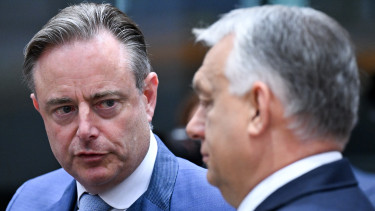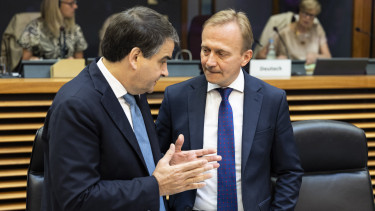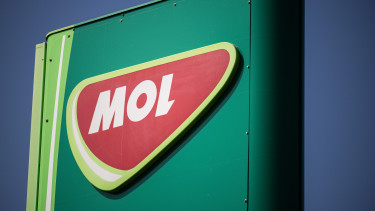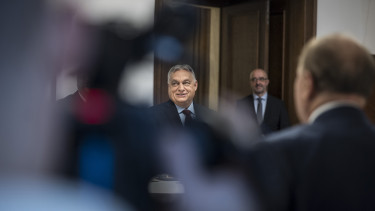EU funds
Hungary steps up EU grant allocations in July
Decision-making in full swing
In our monthly summary, we compare the volume and number of approved EU grant applications at the beginning of each month, inferring the previous month's trends from the data.As the table below shows, the number of winners announced grew by 599 between 1 July and 1 August, mostly due to a high number of grants awarded in the economic development and regional development schemes, while the total volume of grants already awarded this year rose HUF 28 bn to HUF 9,330 bn. As mentioned above, this represents a jump in monthly grant numbers but a drop in volumes.
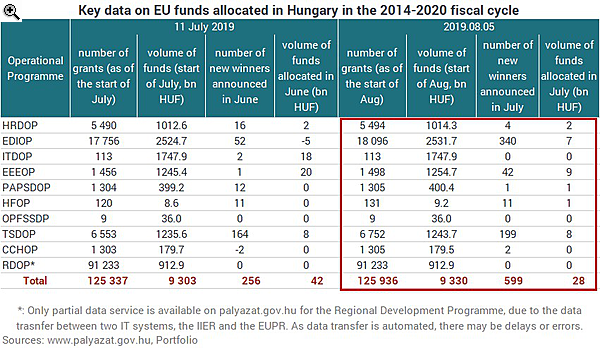
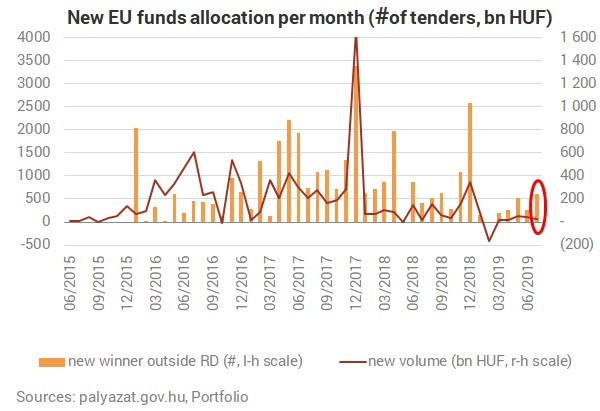
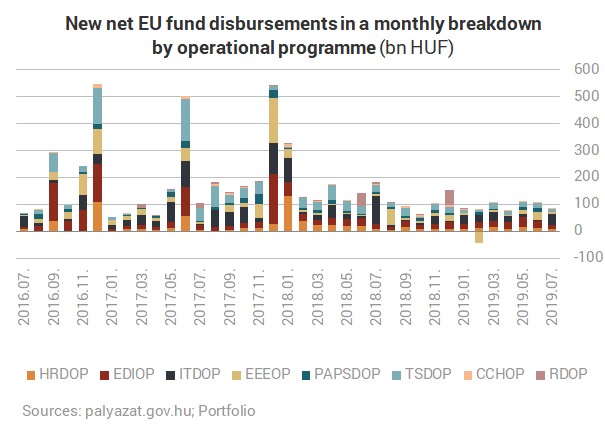
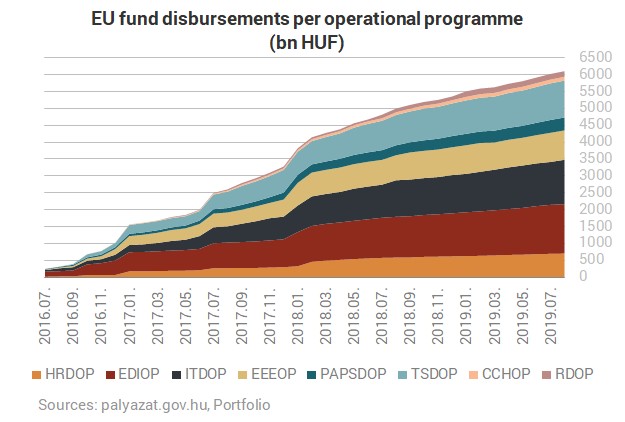
According to the European Commission, the EUR 8.31 bn total payments made so far to Hungary represent 33% of the structural and investment funding available for the seven years, which is slightly below the EU average of 34%. Meanwhile, as the figure below shows, Hungary produced outstanding results in allocating the funding to winning projects, leading the field with an impressive 106% ratio. At the other end of the scale there is Finland, which has only allocated 87% of its budget for the seven-year period but has already disbursed the highest proportion, 57%, to winners.Finally, we should take a look at the four key indicators regarding the seven-year budget available to Hungary. As we can see, the combined amount of tenders announced is already well over HUF 10,000 bn, compared to HUF 9,200 bn available in total, for a tenders/total budget ration of 113% according to our calculations, while allocation to winning projects was 2% higher than the available total at HUF 9,330 bn.
Domestic disbursement is at HUF 6,150 bn, or 67% of the seven-year budget. Meanwhile, as mentioned above, EU transfers have only reached 33% of the total, and this increasing gap between incoming transfers and outgoing payments is making quite an impact on the cash-based general government balance, even if Hungary has been keeping a very low deficit trajectory this year. As shown in our earlier article, Hungary posted a January-July budget surplus, which means that the fundamental processes are on track.
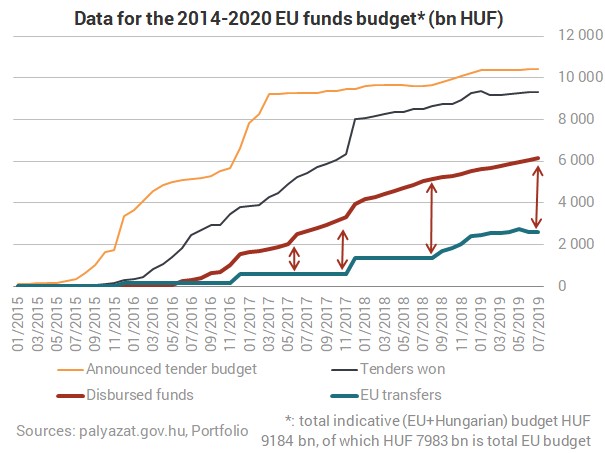
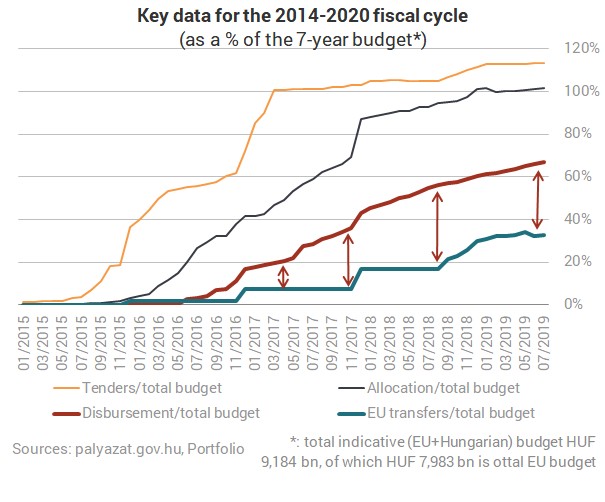

This article is part of the work programme titled "The impacts of EU cohesion policy in Hungary - Present and Future" which is carried out by Net Média Zrt., the publisher of Portfolio.hu, between 1st April 2019 and 31st March 2020 with European Union financing. The views in this article solely reflect the opinions of the author. The European Commission as the funding entity does not take any responsibility for the use of information presented in this article.


